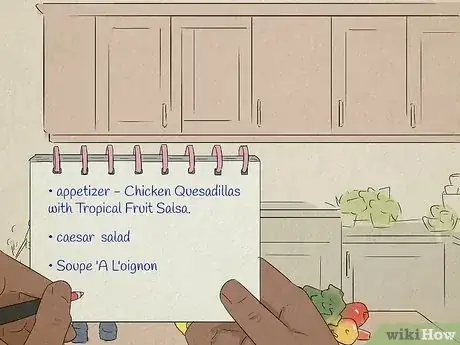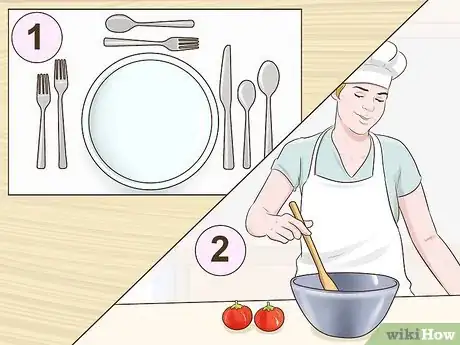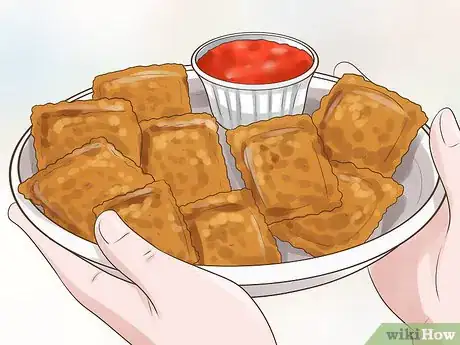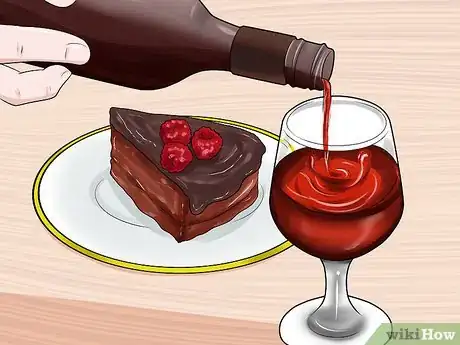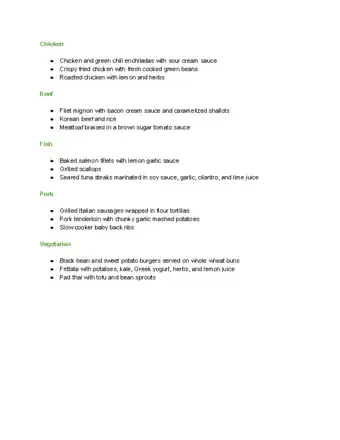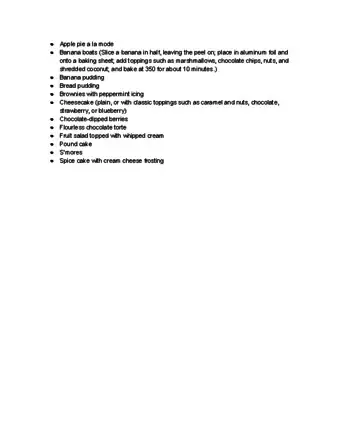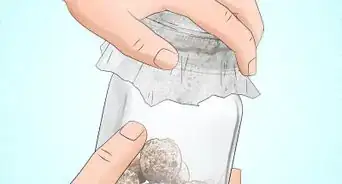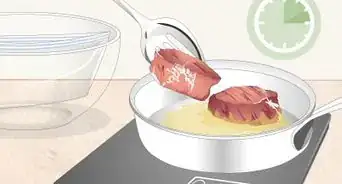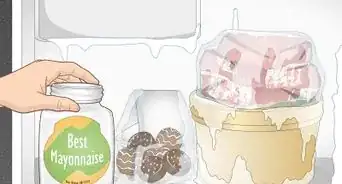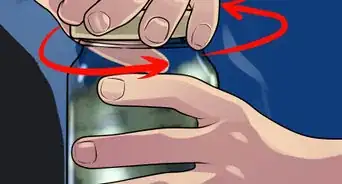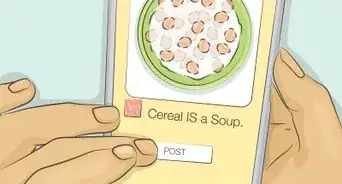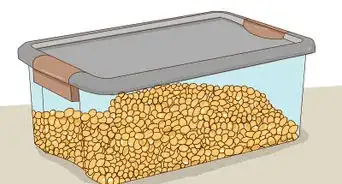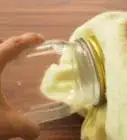This article was co-authored by Vanna Tran, a trusted member of wikiHow's volunteer community. Vanna Tran is a home cook who started cooking with her mother at a very young age. She has catered events and hosted pop-up dinners in the San Francisco Bay Area for over 5 years.
There are 10 references cited in this article, which can be found at the bottom of the page.
wikiHow marks an article as reader-approved once it receives enough positive feedback. This article received 12 testimonials and 91% of readers who voted found it helpful, earning it our reader-approved status.
This article has been viewed 386,292 times.
Learn more...
A full-course meal is a meal that serves more than three courses. These meals are usually extravagant events in honor of someone or a particular event. To host your own full course meal, begin by planning your menu in advance. Decide how many courses you’d like to serve and what they will be. Next, set the table before you begin cooking. This will save you time and allow you to relax with your guests before the meal is served. Finally, begin serving each course. Clear away dirty plates before serving a new course and make sure your guests have full water goblets and wine glasses.
Steps
Getting Started
-
1Plan your menu in advance. Multiple course dinners take a lot of time to cook. If you plan ahead, you will leave yourself plenty of time to cook every course. When creating your menu, choose one or two items that will be prepared fresh and cook the others in advance.
- Soups, pasta sauces, gravies, and bread can be cooked and stored the day before before the meal.
- Choose recipes that use different cooking equipment. For example, if all of your recipes are made in the oven, you may run out of time to cook everything.
EXPERT TIPVanna Tran is a home cook who started cooking with her mother at a very young age. She has catered events and hosted pop-up dinners in the San Francisco Bay Area for over 5 years.Experienced Cook
 Vanna Tran
Vanna Tran
Experienced CookVanna Tran, experienced cook, advises: "If serving each course individually, think ahead about how long it will take to prepare and plate each dish. Rather than prepare each course right before it is served, it might make more sense to begin preparing a plate one or two courses beforehand — especially if there are elements in a dish that will take a long time."
-
2Set the table before you start cooking. This will give you lots of time to prepare the food without feeling rushed when your guests arrive. The way you set your table will depend on how many courses you planned. For example:
- Set down a placemat and a charger plate at every chair. The charger plate will stay in place until the dessert course is served.
- Place the dessert utensils horizontally above the charger plate.
- Set the utensils in the order they will be used. Silverware that will be used first goes on the outside, and those that will be used last are next to the plate.
- Goblets and wine glasses are set near the top-right corner of the placemat.
- Desserts plates and coffee cups are usually brought in after the other courses are finished.[1]
Advertisement -
3Keep prepared food at the right temperature. Cold dishes such as salads or gazpachos can be covered in plastic wrap and stored in your refrigerator. Warm dishes can be covered with foil and placed in the oven to stay warm. Make sure your oven is set to the lowest temperature.
- Most ovens have a “warm” setting. This setting will keep your food warm without burning it.
-
4Consider hiring help. Catering a full meal can be expensive. However, if you hire someone else to cook, clean, and serve the meal, you will be able to enjoy your evening with your guests instead of slaving in the kitchen.[2]
- If you can’t afford to hire full service catering, ask local catering companies if they have service-only packages. You will cook the food but waiters will come to your house and serve the meal.
Choosing the Courses
-
1Decide how many courses you want to serve. A full course meal can have anywhere from three to twenty courses. However, most modern hosts and hostesses limit themselves to six courses.[3] If you do too many, you might not have time to prepare everything properly or spend time with your guests. Remember that each course will require its own plate or bowl and silverware. Make sure you have enough of each to serve your courses.
- A three-course meal usually has an appetizer, a main course, and a dessert.
- A four course meal might include a soup, an appetizer, a main course, and dessert.
- A five course meal can include a soup, an appetizer, a salad, a main course, and a dessert.
- A six course meal usually includes an amuse-bouche, a soup, an appetizer, a salad, a main course, and a dessert.
- A seven course meal includes an amuse-bouche, a soup, an appetizer, a salad, a main course, a dessert, and a mignardise with coffee or tea.
-
2Serve an amuse-bouche. This course is usually presented before the soup or appetizer and is served on small appetizer plates. These dishes consist of one or two savory bites of food that can give a hint of flavors to come.[4] Popular amuse-bouche dishes include:
- Creamy deviled eggs
- Herb-infused cream cheese spread onto a slice of toasted crostini
- Slices of roasted peaches on small wedges of creamy brie[5]
-
3Present the soup course. This course is usually served before the appetizer or in place of an appetizer. This dish is served in a small soup bowl and eaten with a rounded soup spoon. Your soup choice may vary by season. For example:
- In the summer, consider serving a cold gazpacho soup.
- In the winter, serve a warm, creamy lobster bisque.
-
4Distribute the appetizer. This course is referred to as the entrée in many parts of Europe as it introduces the main courses in a meal. These dishes are usually served on small appetizer plates and feature small cuts of meat, seasonal vegetables, starches, and sauces.[6] For example:
- Serve a few pieces of fried ravioli with a side of marinara sauce.
- Bake button mushrooms stuffed with breadcrumbs and seasoning.
- Give your guests a few miniature crab cakes with tartar sauce.[7]
-
5Serve the salad course. In some parts of Europe, the salad course is served after the main course. However, it is becoming more and more common to serve the salad first.[8] Salad courses usually feature seasonal vegetables with a flavorful dressing. Common choices include:
- Fresh, simple garden salads with lettuce, tomatoes, onions, and a tart vinaigrette
- Tangy Greek salads with olives, lettuce, red onions, and feta cheese
- A sweet and sour Southeast Asian papaya salad
-
6Present the main course. The main course is served on a dinner plate. This course is usually a combination of baked, fried, or roasted protein with a seasonal vegetable side dish and bread.[9] If you serve bread, make sure to provide a bread dish and butter knife in the top-left corner of the placemat. Main courses include:
- Hearty pasta dishes topped with chicken, fish, or veal cutlets
- A thick slice of tender roast with potatoes, carrots, and onions
- Grilled pork tenderloin medallions with a side of creamed spinach
-
7Serve the dessert. The dessert course is served on a small appetizer plate with a dedicated dessert spoon or fork. This course usually consists of a slice of cake, pie, or other sweet dish and a glass of dessert wine. However, some people prefer to serve cheese and crackers instead of dessert.[10] For example:
- Make a cheese board with a variety of soft and hard cheeses, such as brie, gouda, and blue cheese. Serve the cheese board with warm, toasted crackers.[11]
- Serve a small slice of velvety chocolate cake and a glass of sweet port wine.
- Give your guests a tart, sweet lemon bar and a glass of dry white wine.
-
8Serve some mignardises. A mignardise is a tiny, bite-sized dessert that is served with tea or coffee.[12] This course signifies the end of the meal. Common mignardises include:
- Small decorated squares of cake, called Petit Fours
- Miniature buttery madeleine biscuits
- Bite-sized French macarons
Serving the Courses
-
1Clear each plate away before serving another. Once all of the guests are finished eating, gather up the dirty dishes, leaving the charger and any unused silverware.[13] Serve the next course immediately by placing the prepared dish directly onto the charger.
- Plan for a little bit of prep time in the kitchen between courses to arrange the food on the plates.
- The charger stays on the table until dessert is served.
-
2Consider how drinks will be served. When serving a full course meal, most hosts or hostesses provide goblets of water and a glass of wine. If you have room, consider serving drinks family-style by placing pitchers of water and bottles of wine on the table, allowing the guests to serve themselves. This will save you time and let you relax during each course.
- If you don’t want pitchers or wine bottles on the table, you will need to refill guests’ glasses yourself.
- If you have hired wait staff, they will refill the guests’ drinks for you.
-
3Clear all of the dishes before dessert. Once the dessert course is ready, clear away any bread plates, main course plates, silverware, and the charger. Leave the dessert silverware at the top of the placemat on the table.[14] This will give your guests room to stretch out while they enjoy dessert and digest their meal.
- Some people also like to offer dessert wine, port, brandy, or scotch during this course.
Course Suggestions
Community Q&A
-
QuestionHow long does each course take to serve?
 Community AnswerThe course is finished when the last guest has finished eating it. Therefore, it can vary based on how long your guests take to eat. Usually, each course lasts about ten minutes.
Community AnswerThe course is finished when the last guest has finished eating it. Therefore, it can vary based on how long your guests take to eat. Usually, each course lasts about ten minutes. -
QuestionHow do you prepare a two course meal for a family that includes a person on weight reducing diet?
 Community AnswerServe a healthy salad first. For the main course, serve a low calorie, protein-rich dish such as grilled chicken and seasonal vegetables.
Community AnswerServe a healthy salad first. For the main course, serve a low calorie, protein-rich dish such as grilled chicken and seasonal vegetables. -
QuestionWhat is a good theme for a seven course meal?
 HumanBeingTop AnswererYou could take your diners on a culinary world tour with a dish inspired by each of the seven continents of the planet, or stick to the cuisine of one area or region. You could choose a movie theme. Serve dishes from one time period, the 80s, the 40s - whatever, or, journey through time as your meal progresses. You can have a silly, tacky theme, or be classy and sophisticated. Ensure your theme can provide a good main course and work the rest of the courses and other theme elements around that; apples could be a good theme, pork with apple sauce could be your main dish, but chocolate, while a great theme, is harder in a main course. Remember to consider your guests' dietary requirements.
HumanBeingTop AnswererYou could take your diners on a culinary world tour with a dish inspired by each of the seven continents of the planet, or stick to the cuisine of one area or region. You could choose a movie theme. Serve dishes from one time period, the 80s, the 40s - whatever, or, journey through time as your meal progresses. You can have a silly, tacky theme, or be classy and sophisticated. Ensure your theme can provide a good main course and work the rest of the courses and other theme elements around that; apples could be a good theme, pork with apple sauce could be your main dish, but chocolate, while a great theme, is harder in a main course. Remember to consider your guests' dietary requirements.
References
- ↑ https://www.tasteofhome.com/article/how-to-set-a-table/
- ↑ https://www.washingtonpost.com/lifestyle/magazine/hiring-a-catering-company-for-a-dinner-party-is-expensive-is-the-payoff-worth-the-cost/2014/11/20/d28e074e-602b-11e4-9f3a-7e28799e0549_story.html
- ↑ http://ladypersonified.com/id97.html
- ↑ http://www.huffingtonpost.com/quora/what-does-a-true-five-cou_b_7599524.html
- ↑ http://www.tastespotting.com/tag/amuse+bouche
- ↑ http://www.huffingtonpost.com/quora/what-does-a-true-five-cou_b_7599524.html
- ↑ http://startcooking.com/15-simple-appetizers-your-guests-will-love
- ↑ http://www.thekitchn.com/cultural-differences-salad-bef-65008
- ↑ http://www.etiquettescholar.com/dining_etiquette/gourmet_guide/dinner_menu.html
- ↑ http://www.chef2chef.net/learn-to-cook/cooking-menu-courses.php
- ↑ http://www.etiquettescholar.com/dining_etiquette/gourmet_guide/dinner_menu.html
- ↑ http://www.chef2chef.net/learn-to-cook/cooking-menu-courses.php
- ↑ https://www.etiquettescholar.com/dining_etiquette/table_manners/serving_techniques/formal_dinner_service.html
- ↑ https://www.tasteofhome.com/article/how-to-set-a-table/
About This Article
To serve a full course meal, start with an amuse-bouche, which is a bite-size course served on a small plate, like deviled eggs or crostinis with cheese. Next, serve your guests a small helping of soup. When they're finished, move on to the appetizer, which can include things like crab cakes, stuffed mushrooms, and small cuts of meat. After the appetizer, serve a salad and then present the main course. Finally, offer your guests dessert, like a slice of cake paired with a sweet wine. To learn how to set the table for a full course meal, keep reading!
